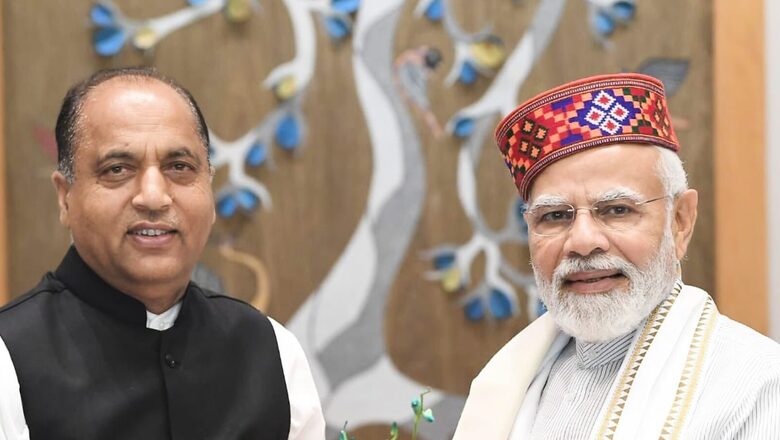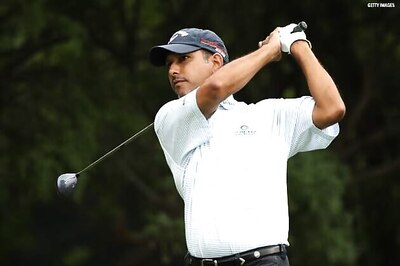
views
In a recent interview to a media house, BJP president JP Nadda said, “Hum Raaj Nahin, Rivaaj Badalne Aaye Hain” (The BJP is here not merely to win elections but to change the manner in which politics in India is done). He added that the BJP was a party of trend-setters, after being the only political Party since 1985 to win the Uttar Pradesh polls twice in a row and also the only party to win Uttarakhand twice in a row ever since it became the 27th state on 9 November 2000. The BJP, under Nadda, also won Goa in 2022, thus coming to power for the third time in a row. The BJP also formed the government in Manipur, twice in a row, by storming to power with a 38 percent vote share and a solid 32 seats in 2022, leaving an electorally vanquished Congress with a measly 5 seats and barely a 17 percent vote share.
However, if there is one state where the Narendra Modi brand of development has established new milestones, it is Himachal Pradesh (HP). Social security pension is being provided to about 7.50 lakh people by spending an amount of Rs 1,300 crore, whereas previous Congress government had spent only Rs 400 crore to provide social security pension to less than 4 lakh people of the state. Nine food parks of multinational companies have been established in Himachal Pradesh and the state has also emerged as a pharma hub for over 12 companies who are exporting their products worldwide. The status of Special Category State was also restored by Prime Minister Narendra Modi, as also the 90:10 ratio for the Centre and the state in a project. Under the Congress, the ratio for Himachal was only 60:40.
Himachal attained Open Defecation Free (ODF) status on 28 October 2016. Rural areas in the state have 24 hours of power supply. At least 12,891 unelectrified households have been electrified under the “Saubhagya Yojana” in HP. Through “Pradhan Mantri Greeb Kalyan Anna Yojana” (PMGKAY), more than 7 lakh households benefited during the pandemic. Adding 10 GW of renewable energy capacity by 2030 under “Swaran Jayanti Energy Policy” by giving one-time relaxation to power producers to construct pending hydropower projects, is yet another visionary step by PM Modi. Distribution of off-grid solar power systems of 250 W each to 1500 families below the poverty line (BPL) in Pangi valley, Lahaul, and Spiti, in order to promote renewable energy, has been a unique step.
As per the State budget for FY 2022-23, the BJP government has passed the proposal to install rooftop solar panel energy systems in 50 government colleges, 50 schools and 20 ITIs to accelerate the use of renewable energy. State-run SJVN has won the 15 MW floating solar power project in Bilaspur and this shall help in fulfilling Prime Minister Narendra Modi’s vision of generating 500 GW of energy by 2030 from non-fossil sources. The project is expected to generate over 32.85 MU (million units) in the first year and the cumulative energy generation over a period of 25 years will be over 756 MU.
The Kol Dam Project, which was started during the tenure of the Atal Bihari Vajpayee government, was eventually dedicated to the state by Prime Minister Modi. The Atal tunnel was also a gift of PM Modi to the people of the state. Cutting through the Pir Panjal range, this tunnel has reduced distance between Manali and Leh by 46 km and travel time by five hours. Besides sanctioning IIM and AIIMS projects, medical colleges at Chamba, Sirmour, Hamirpur and Mandi are coming up, thanks to the Modi government at the Centre.
Himachal Pradesh became the first State of the country to achieve the target of 100 percent vaccination of the target group. Over 9.37 lakh farmers of the state are being provided Rs 6,000 per year under PM Kisan, while over 8.37 lakh connections were provided in the state, under the “Jal Jeevan Mission” (JJM) scheme, during the last two years alone. During the last forty years only 8 lakh water connections were provided in the state. Thanks to JJM, along with an initiative called “Jal se Krishi ko Bal” to extend water facilities to farmers, as of today, more than 16 lakh households have tap water supply in HP.
Under the “Jal Jeevan Mission”, the state government has also succeeded in providing households of Tashigang village, the country’s highest polling station situated at an altitude of 15,256 feet in district Lahaul-Spiti, with tap water. In order to free the women from the ill effects of harmful emissions, the Modi government’s “PM Ujjawala Yojana” and the state BJP’s own “Mukhya Mantri Grihini Suvidha Yojana” have been making lives easier for women. Under both schemes, the “double-engine sarkar” provided free LPG cylinders to more than 4.69 lakh beneficiary families.
Besides the Rs 261 crore medical device park coming up at Nalagarh, over 5.40 lakh people were registered under the “Himcare” scheme and Rs 340 crore has been spent on over 18,000 patients registered under “Sahara Yojana”. Under “Ayushman Bharat”, a total of 4.33 lakh families are availing benefits.
Infrastructural development in Himachal Pradesh was never a matter of concern for the Congress party. The current BJP government has, however, ensured that land acquisitions take place smoothly with an emphasis on fair compensation, transparency and rehabilitation. “Pradhan Mantri Gram Sadak Yojana” (PMGSY) has indeed initiated a paradigm shift in the way rural roads are designed, monitored, built, governed and managed, thus ushering in sustainable rural infrastructure development and maintenance. Roads are the arteries through which India’s economy throbs and thrives.
By connecting farmers to markets, children to schools, rural to urban areas and the sick to hospitals, roads have become vital for economic prosperity and poverty reduction. More than 20,000 km has been constructed in the State since the inception of PMGSY. In a recent visit to Mandi (Choti Kashi), Prime Minister Modi inaugurated and laid the foundation stone of hydropower projects worth Rs 11,000 crore that will help boost HP’s economy. The BJP under the leadership of the PM also laid the foundation stone of the Renukaji Dam project. This project was pending for around three decades, but was made possible through the vision of cooperative federalism, when Himachal Pradesh, Uttar Pradesh, Haryana, Rajasthan, Uttarakhand and Delhi were brought together by the Modi government to make the project possible.
The 40 MW project is being built at a cost of around Rs 7,000 crore. The Prime Minister also laid the foundation stone of the Luhri Stage-1 Hydro Power Project. The 210 MW project will be built at a cost of over Rs 1,800 crore. It will lead to the generation of over 750 million units of electricity per year. The Dhaulasidh Hydro Power Project is the first hydropower project in the Hamirpur district. The 66 MW project is being built at a cost of over Rs 680 crore. It will lead to the generation of over 300 million units of electricity per year. The 11 MW Sawra-Kuddu Hydro Power project, inaugurated recently by the Prime Minister, has been built at a cost of around Rs 2,080 crore and will generate over 380 million units of electricity per year.
The “Double Engine Sarkar” has enabled the presence of industrial corridors and multi-modal logistic hubs, export promotion industrial parks, trade exhibition centres, R&D infrastructure and Internet penetration in the rural areas of Himachal Pradesh. JP Nadda, who hails from the hill State, has been overseeing the preparations, right from strengthening the party’s presence at the booth level to firming up the campaign points and the narrative to be underscored at public rallies. In the past few months, he has been travelling extensively, meeting party workers and galvanising the cadre to ensure that the BJP comes back to power with a thumping majority.
AIIMS, Bilaspur, in Himachal Pradesh, spread over 247 acres, at a cost of Rs 1,470 crore, is a modern, 750-bed hospital that offers 18 specialty and 17 super-specialty departments, 24-hour emergency and dialysis facilities and a 30-bed Ayush block. It was inaugurated by PM Modi on 5 October 2022 and is a glowing example of how providing affordable healthcare is one of the key cornerstones of the Modi government. If leadership is indeed about walking the talk, then the rapid progress by Himachal Pradesh is a classic example of how intent and execution have converged seamlessly to ensure growth with equity.
PM Modi’s emphasis on greater connectivity in hilly areas has ensured that the development divide between hills and plains has been effectively resolved. Hills today are the hubs of growth, just like the plains are. And the credit for this goes to the Modi government’s focus on last-mile delivery, with a focus on inclusivity.
Sanju Verma is an economist, national spokesperson of the BJP and the bestselling author of ‘The Modi Gambit’. Views expressed are personal.
Read all the Latest Opinions here




















Comments
0 comment